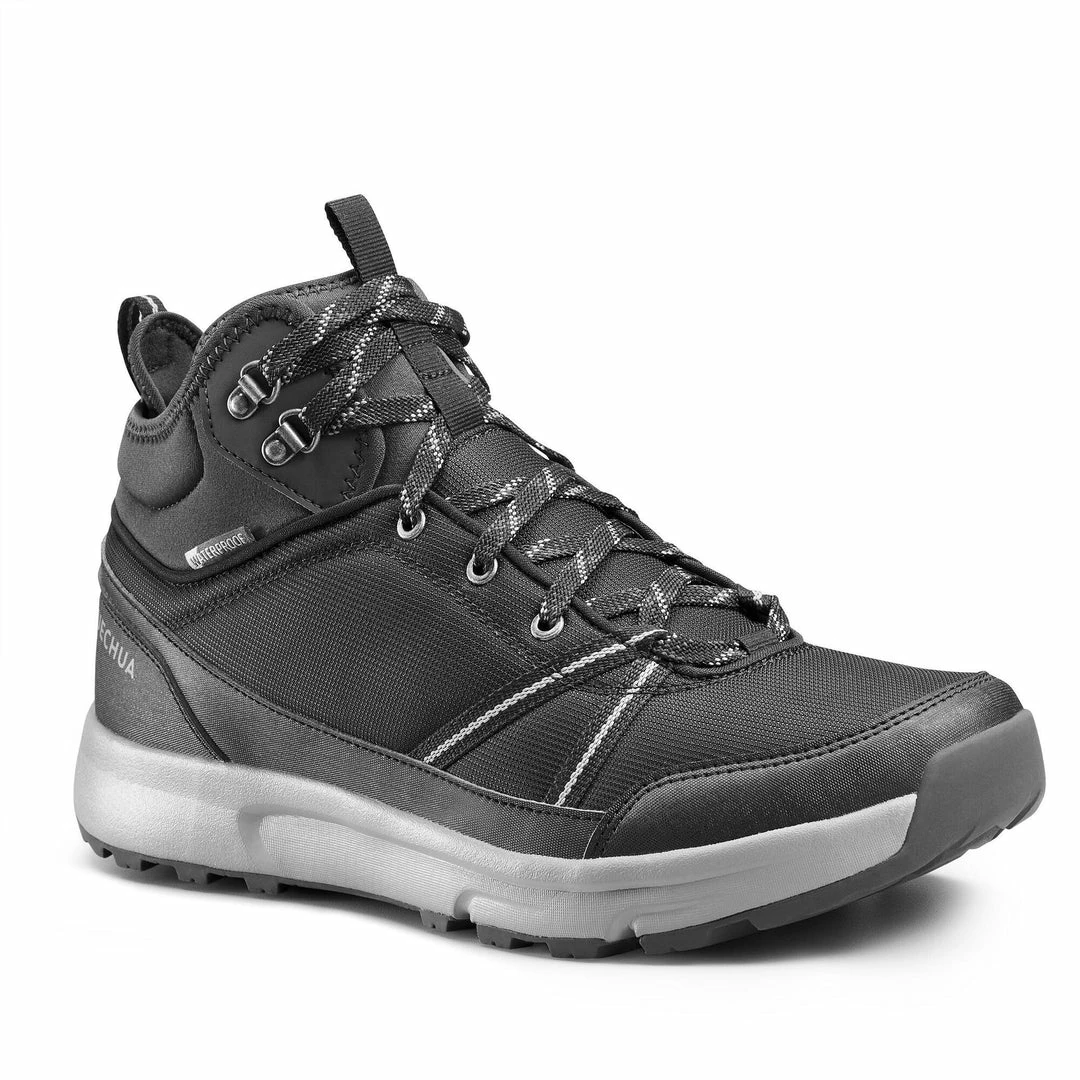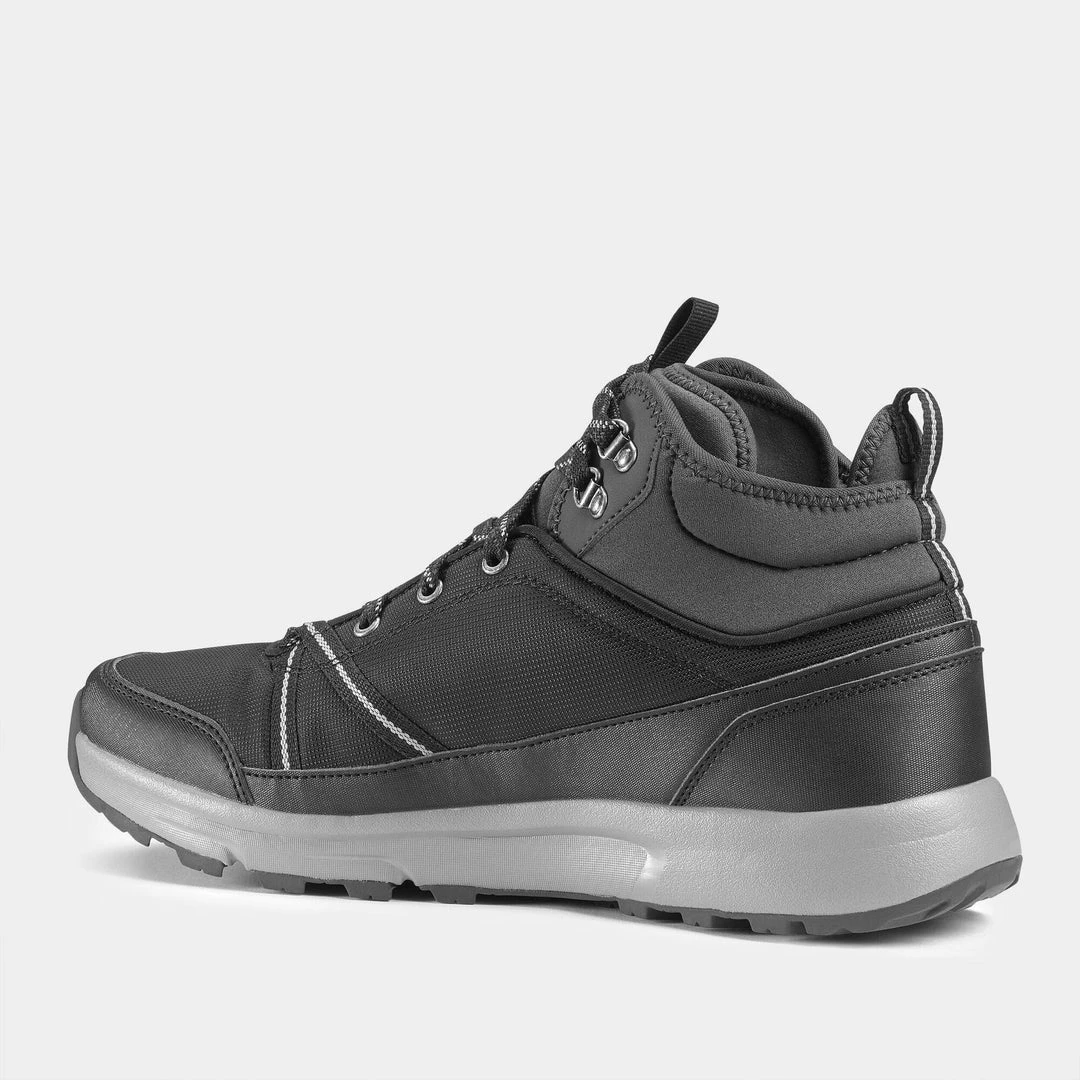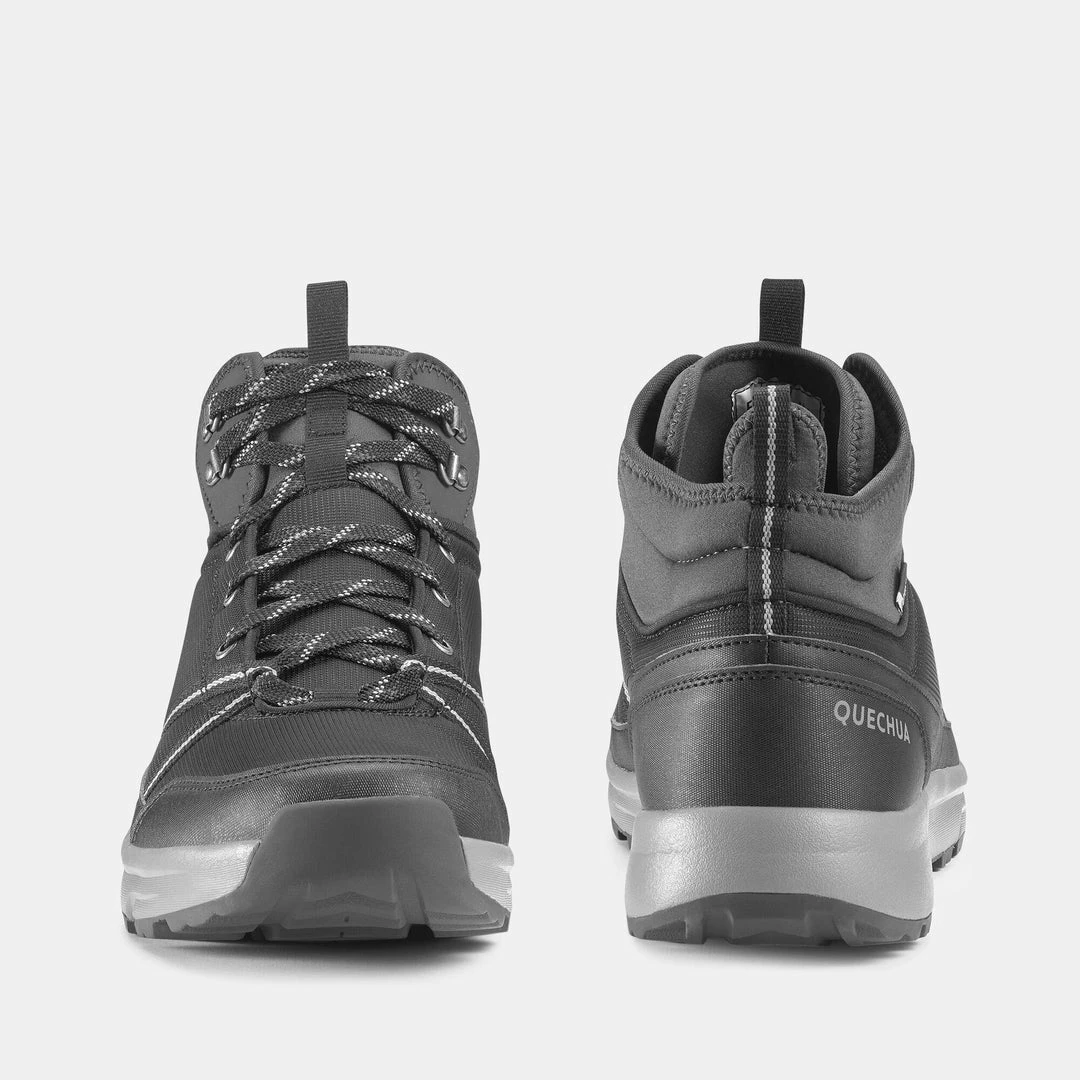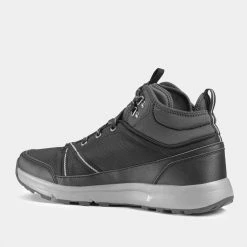Best reviews of 🥰 Quechua NH150 WP, Waterproof Mid Hiking 🥾 Boots, Men’s 🔔
$59.99 Original price was: $59.99.$42.59Current price is: $42.59.
- Experience the Best Quality
- The quality you expect, the service you deserve.
- The best quality products, always.
- Safe Transactions, Happy Customers

Waterproof, comfortable boots that provide good grip even on slightly uneven country trails. All at a great value. A great value and stylish in color.
Perfect for off-road hiking, these NH150 Mid WP waterproof boots have been developed for long hikes and tested to withstand the rain.
We have reduced our environmental impact on this product
We have reduced the environmental impact of these boots by 14.4% with their eco-design:
– Outer component: 40% recycled polyester and fluoride-free
– Collar: 90% recycled polyester and fluoride-free mesh
– Inner lining: 100% recycled and fluoride-free
– Insole and membrane lining: mass pigmentation using less water (Dope Dye)
– Outer sole: with 30% recycled tire rubber
Resistant soles for hiking trails
The sole’s design is the result of long research carried out in our labs. It is composed of a specific rubber formula that optimizes grip and resistance. We are always looking for the best solution to progress on loose (forest path) and rocky (coastal path) hiking trails.
Road use may lead to premature wear on your boots and cause discomfort. They are not suitable for mountain hiking.
Tested for durability and optimal resistance
Laboratory tests were conducted to test the following elements: tearing eyelets and straps, gluing, toxicology, UV resistance, abrasion-resistance of outsole and upper components, accelerated aging. These tests allow us to improve the quality of our products and prevent premature wear of our hiking boots.
Boots are waterproof for 2 hours of hiking in the rain
The NH150 WP boots have been laboratory tested for 2,000 flexes. They are therefore waterproof for 2 hours hiking. During the waterproofing test, we test 3 levels of waterproofing: – 2,000 flexes, approximately 2 hours of hiking
– 4,000 flexes, approximately 4 hours of hiking
– 8,000 flexes, approximately 8 hours of hiking
We recommend you use a waterproof spray several times a year to restore the original water-repellent properties and reduce stains.
How do we test the waterproofing of your boots?
Laboratory- and field- tested, these boots have a membrane to ensure optimal waterproofing and breathability. First, the boot is immersed in water while internal air pressure is applied to check that no bubbles form on the surface of the footwear. Next, boots are fitted to a mechanical arm that simulates walking and half immersed in water so we can test that the inside remains perfectly dry.
An improved product based on your feedback!
Based on your feedback, we have improved the concept and design of the NH150 Mid WP waterproof boots.
For this new model, we have added an EVA interlayer sole (ethylene vinyl acetate) to improve your comfort when hiking by limiting the feel of stones underfoot.
How to choose the right size hiking boots
Try on both boots, standing up and wearing the socks you use for hiking. Try on several models or sizes if necessary. Check 2 comfort points:
– the heel seating
– the front of the foot on a downward slope
Avoid any pressure points when fitting. Feel free to walk to test the comfort and support. Gradually start using your boots during your 1st few hiking trips to break them in.
What socks should you wear with the Quechua NH150 Mid waterproof boots?
These boots are slightly breathable, but not enough to evacuate all humidity created by your perspiration. We advise you to choose Hike 100 Mid socks: they contain moisture-absorbing cotton and have a reverse terry-knit construction under the sock that wicks moisture away from your foot. They are also high enough to protect your ankle from the boot. It is an excellent combination to reduce the chance of blisters.
Why choose recycled polyester?
By recycling plastic bottles or used fabrics to produce our polyester, we reduce the use of petrol-based resources while maintaining the material’s quality and performance for your hikes.
Our commitment to using less water with this product.
Textile dyeing requires a lot of water and also produces waste water from the dye baths. To reduce our environmental impact, we use a mass pigmentation process that involves adding the color pigments when the thread itself is produced.
| Color | Black, Midnight Blue |
|---|---|
| Size | 6.5, 7.5, 8, 9, 9.5, 10.5, 11.5, 12, 13, 13.5 |
Be the first to review “Best reviews of 🥰 Quechua NH150 WP, Waterproof Mid Hiking 🥾 Boots, Men’s 🔔” Cancel reply
Related products
Hiking Clothing
Best Sale 🔥 Quechua 2 Second Fresh & Black, Waterproof Pop Up Camping Tent, 3 Person 🤩
Hiking Clothing
Budget 🤩 Forclaz Trek 100 23°F Down Packable Puffer 🎒 Backpacking Jacket Hiking Clothing 🤩
Hiking Clothing







































Reviews
There are no reviews yet.